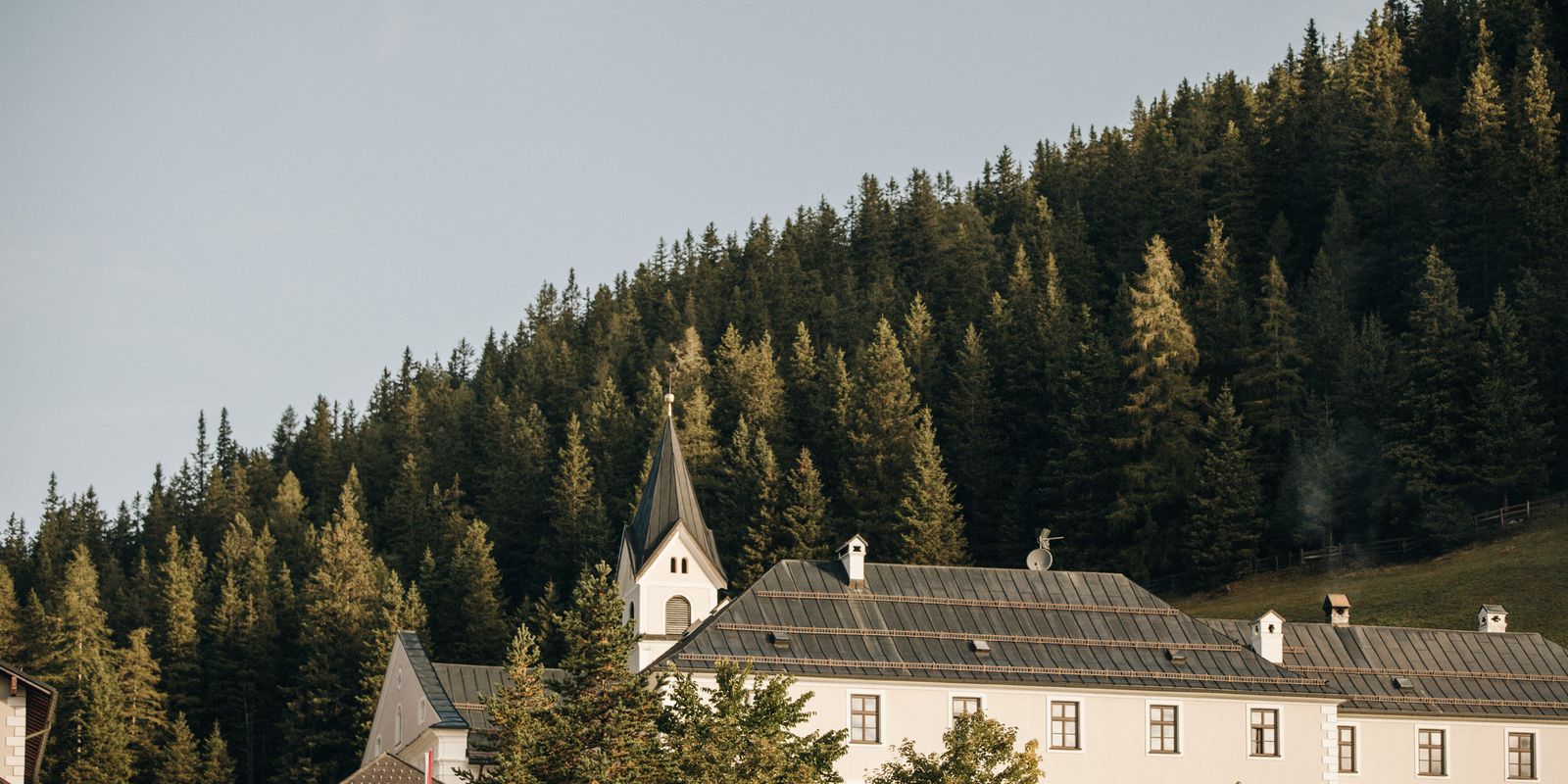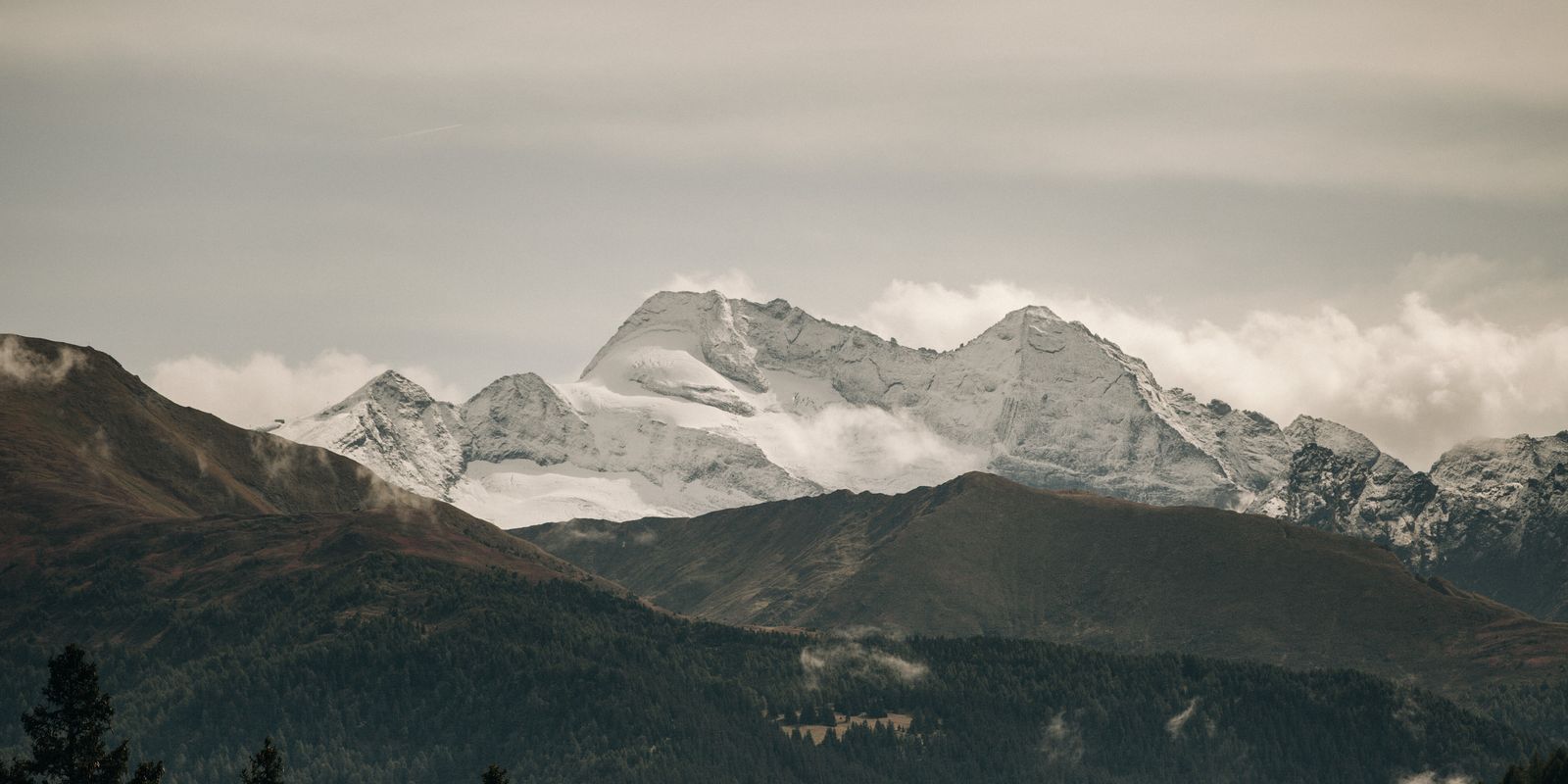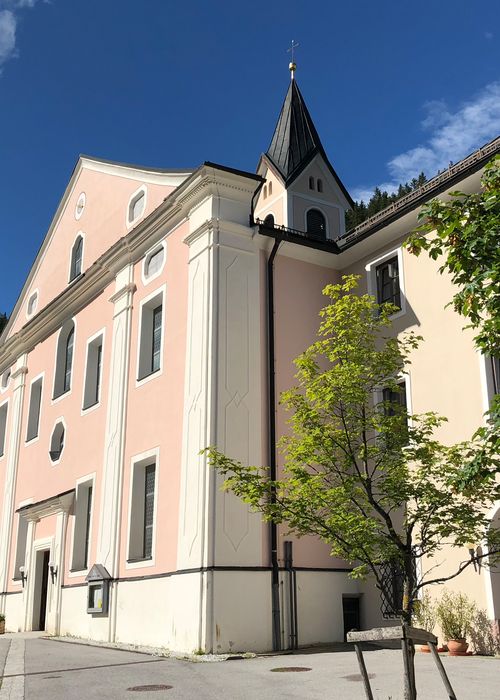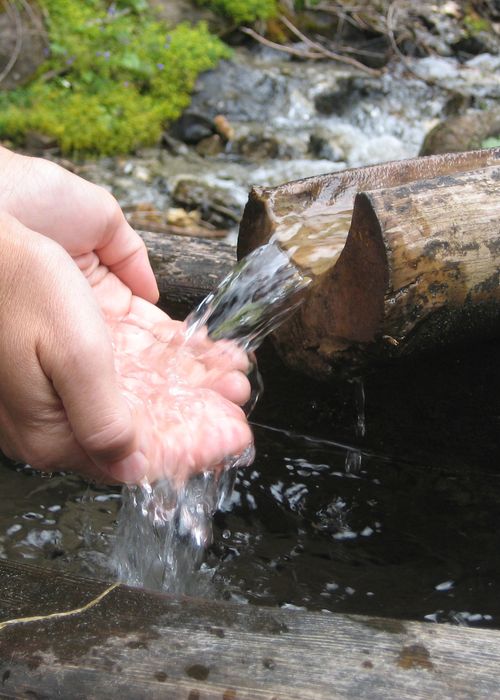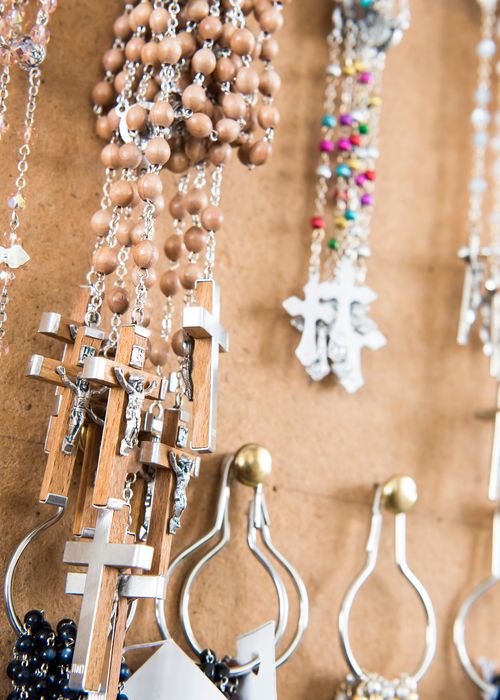Place of Pilgrimage
Where the picturesque pilgrimage church stands today was originally a small forest clearing. The people who crossed the mountain passes from one valley to another would stop and rest here, and the name "Waldrast" (forest rest) is derived from this resting place.
On Holy Saturday in 1407, two shepherd boys Hans and Peter from Mützens discovered the image of Virgin Mary in a hollow larch trunk. The relatives of the boys then carefully sawed off the image of the Virgin Mary that was in the trunk and brought it to the parish church in Matrei am Brenner.
When woodcutter Christian Lusch was on his way home from work during Pentecost of the same year, the sound of bells rang out. Exactly where the pilgrimage church stands today, the Virgin Mary appeared to him with a little child in her arms and reminded him of what an inner voice had already instructed him to do: he should build a church in this place. In 1409, the bishop of Brixen granted permission for the construction project. After 20 years, Lusch's dream became a reality, and the chapel built in honor of Mary was completed.
Beginning of the pilgrimage to Maria Waldrast
In 1429, the image of the Virgin Mary was brought back to the mountain in a ceremonial procession to the newly built "Maria Waldrast" chapel.
In 1465, the auxiliary bishop of Salzburg consecrated the altars of the pilgrimage church. A chaplain was appointed to care for the pilgrims, and territorial prince Maximilian (the later emperor) allowed him to provide meals for the pilgrims. During the peasant uprisings, the chapel was looted. However, the damage was repaired by the faithful.
The Servite Order
Under territorial prince Leopold V, the foundation was laid for the Servite monastery attached to the pilgrimage church in 1621, and the Servites (Servants of Mary) were entrusted with the pastoral care at this pilgrimage site. In 1644, the work was completed under Archduchess Claudia de' Medici. In 1660, the new altars were built in the chapel and enlarged from 1728 to 1735 and redesigned in a Baroque style.
Emperor Joseph II abolished the monastery in February 1785 and prohibited the pilgrimage. The living quarters were rendered unusable, and the buildings were demolished and thus abandoned to decay. The Order bought back the ruins in November 1844 and rebuilt the buildings.
In 1941, however, the monastery and church were closed by the National Socialists. In June 1945, the Fathers were able to return and carry out the necessary repairs. From 1986 to 1995, the church and monastery underwent renovations.
Place of pilgrimage and power
Back then like today, Maria Waldrast is a popular pilgrimage destination. Since the beginning of the pilgrimage, not much has changed. Pilgrims, those passing through, adventurers, and peace seekers from near and far are in search of a sanctuary, spirituality, and recovery behind the mighty walls of the monastery. In addition, the Servite monastery is the perfect place for seminars, courses, family holidays, and all kinds of celebrations.
Here, what a voice once proclaimed at the time of origin of this pilgrimage site is palpable: "Great signs will be seen here until the end of time!"
Arrival:
The monastery inn is ca. 7 km from the "Matrei am Bernner" autobahn exit and can be reached in only a few minutes via a well-developed toll road. The road is toll-free for overnight guests as is parking, which is available right at the inn.
